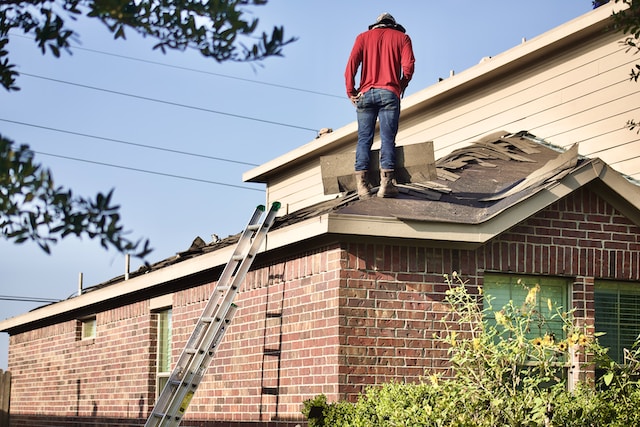The roof is the top covering of a building or other structure, protecting against rain, snow, sunlight, and extremes of temperature. Roofing is the construction and maintenance of this protective covering.

Today there is a wide variety of roof materials and styles to choose from. The selection of materials is often determined by city and jurisdictional building codes.
The type of roofing material used on a home is an important decision. Not only does it affect the house’s overall look, but it can also directly impact its durability and longevity. Choosing the right roofing materials can save you from expensive repairs in the future.
Some of the most popular types of roofing materials include wood, shingle and clay. Each one has its own unique perks, but they all offer protection against rain, wind and sun.
There are also other options that can add a pop of color and style to a roof, such as a green roof. These are essentially small gardens in the shape of a roof and provide an environmentally friendly alternative to traditional roofs. They can help with water runoff, improve insulation and even provide a source of oxygen. However, they can be costly and require regular maintenance to keep them healthy.
Metal is another option that offers durability and a range of styles. For instance, steel roofs can be coated with a high-quality baked-on coating or mineral granules to look like traditional asphalt shingles or wood shakes. Some metal roofs can even last up to 50 years.
Clay tile roofs are a beautiful and timeless option that can add an elegant touch to a home. They are resistant to fires, earthquakes, salty air and insect damage. They are usually more expensive than other roofing materials but can add value to a property and last up to 50 years.
Other roofing materials include rolled roofing, which is typically made from galvanized iron. This is popular on flat or low-incline roofs and is often hammered into place. It should not be hammered onto a sloped roof, as this can cause leaks.
Composition shingles are the most common roofing materials in states. They have an organic or fiberglass core impregnated with asphalt and then coated with mineral granules to add color and texture. They are best suited for roofs with a 4 in 12 pitch or higher, but can be installed on a lower roof with special installation methods.
Roofing Structure
Almost always wood, the roof structure is what gives a house its shape and framework upon which to lay the roofing materials. It is the series of trusses and beams that are connected together to form the roof and can be seen when looking at a home under construction. The type of roofing structure used in a home will depend on the roof covering to be used, the style and architecture of the building as well as local and jurisdictional building codes. The struts that extend from the king post of a truss are called purlins and are designed to support outward facing areas of the roof. A valley is the point at which two roof planes meet while a dormer is an area of the roof that projects outward.
Roofing Installation
Roofing is the construction and installation of the upper part of a building or structure. It serves as a protective covering that keeps out rain, snow, sunlight, and other weather elements. There are a variety of different roofing materials, from simple asphalt shingles to copper roofs. Each type of roofing material has its own installation process and costs. A professional roofing contractor can help you select the right materials for your home and install them correctly.
Before you start the actual roofing, you must first build a frame for it to rest upon. This can either be done when the house is being built, or it can be added on to an existing home during a re-roofing project. Either way, the frame must be strong enough to support the weight of the roofing materials. The most common type of frame is a truss system.
Once the frame is up, you can start putting on the first layer of protection, called the sheath. The sheath is usually wood paneling that is cut with precision and attached to the trusses with care. This is the part of the roof that you can see, so it’s important that it looks good and is durable.
Next comes the underlayment, which is a layer of felt or other material that goes down before the shingles. This helps to keep the shingles watertight and provides a base for them. Some underlayment materials also maintain a fire rating, which is important if your area has strict building codes.
Roofing Repair
Once your insurance company approves the repair work, the contractor will send you a check to cover the cost of materials. You may also need your mortgage company to endorse the check, as they have a financial interest in the property. The roofing company will document any unforeseen issues and submit them to your insurance to request additional funds, which they will add to the final payment once the work is completed. Missing shingles will be replaced, cracked flashing and vent booting seals will be caulked or tarred, and leaky areas will be sealed. The roofing contractor will also do a quality walk of the roof to ensure that it meets industry and code standards. Roofing repair is a comprehensive process that requires special skills, training, and knowledge.
